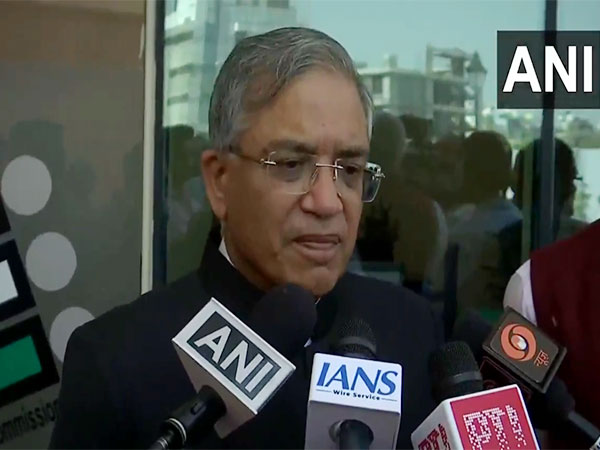Expert warns of further tremors in western Nepal after Wednesday's quake
Nov 10, 2022

Dhangadhi [Nepal], November 10 : A disaster expert has warned of further tremors in western Nepal after Wednesday's 6.6-magnitude earthquake which so far has claimed 6 lives in Doti district.
The 6.6-magnitude earthquake has been recorded as one of the biggest earthquakes in the western part of Nepal after the Himalayan nation formally started recording and measuring earthquakes.
"There has been research and scientific findings as well as reports and assessment that says that the western part of Nepal is vulnerable to mega earthquakes. It is because Nepal is located on the top of two tectonic plates- the Eurasian and Indian plates that are moving against each other for long and energy has been accumulated beneath that and at any time it can burst which may cause a mega earthquake in this region. So this region is just on the top of this fissure on the faultline, that's why the chances are much high," Dr Shreejan Malla, a disaster expert told ANI in an interview.
Nepal's National Earthquake Monitoring and Research Center till Thursday afternoon has recorded about 300 aftershocks measuring less than 4.0 magnitude. On Thursday morning, the western district of Bajura recorded a 4.1 Richter scale aftershock.
Experts labelled Wednesday morning's earthquake as a moderate-level quake which is recorded as the second mega earthquake in the Western part of Nepal. Earlier in the year 1980, the western part of Nepal had recorded a 6.5 magnitude earthquake with an epicenter at Bajhang.
The western part of Nepal which still lacks basic amenities of transport, communication and electricity amongst others hosts non-engineered houses made of mud and bricks which can be destroyed by frequent jolts.
"Codes and policies about the construction of the houses haven't been implemented robustly at local levels that are also one indicator and living proof that extent of damage might go beyond our expectation," Dr Malla, working as a consultant with various international organizations in the field of disaster added.
Earlier in 2015, a high-intensity earthquake of magnitude 7.8 on the Richter scale struck central Nepal between its capital Kathmandu and the city of Pokhara. It is estimated to have killed 8,964 people and injured close to 22,000 people.
The earthquake, known as the Gorkha earthquake, also shook several cities across north India; tremors were also felt in Lahore, Pakistan, Lhasa in Tibet, and Dhaka, Bangladesh.
The earthquakes in Nepal have caused unprecedented damage to lives and property and have necessitated the demand for well-framed policy measures to manage such disasters.
Nepal suffered its worst recorded earthquake in 1934. It was measured at 8.0 and destroyed the cities of Kathmandu, Bhaktapur, and Patan.
It has been established that the Indian plate is getting subducted under the Eurasian plate at 5 cm a year. This is responsible for the formation and increasing height of young fold mountains of the Himalayas and also makes the region prone to earthquakes. Disasters like quakes can wreak havoc if preparedness is not ample.




















